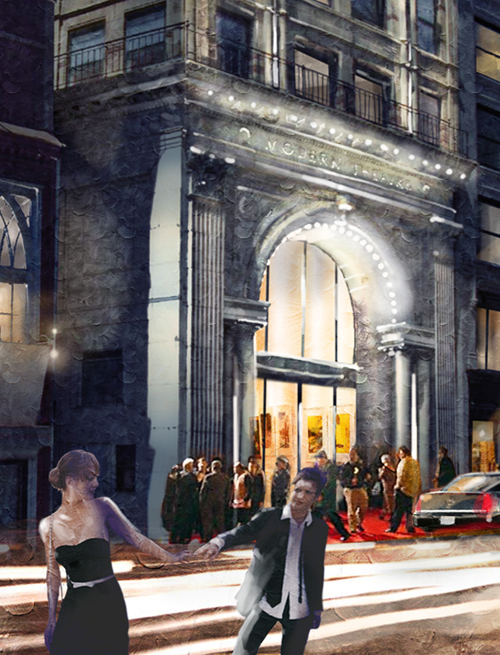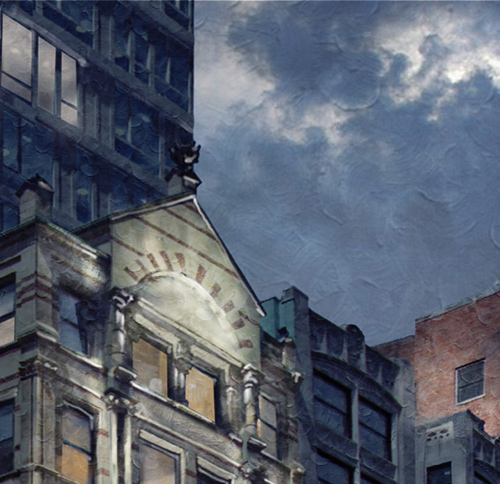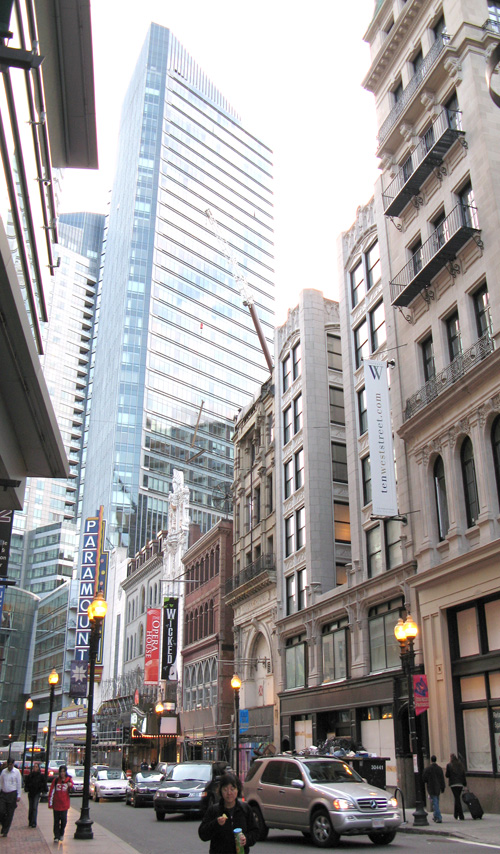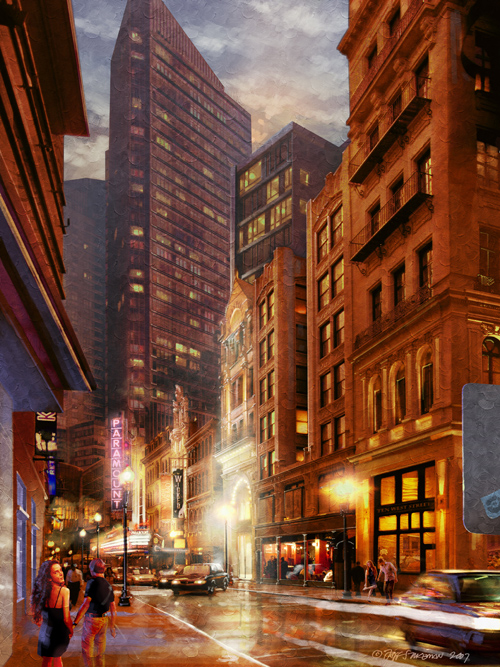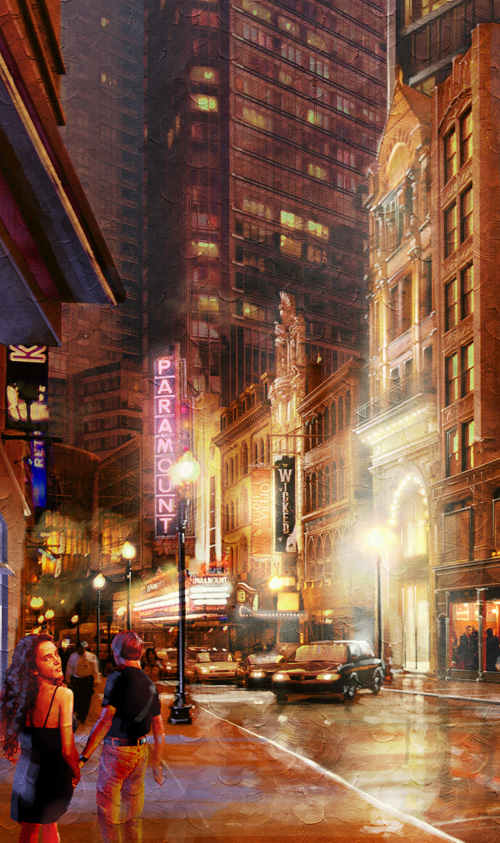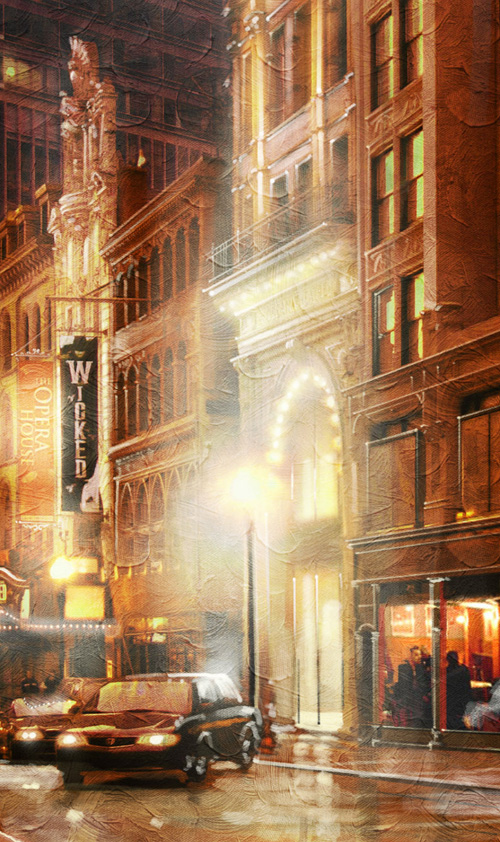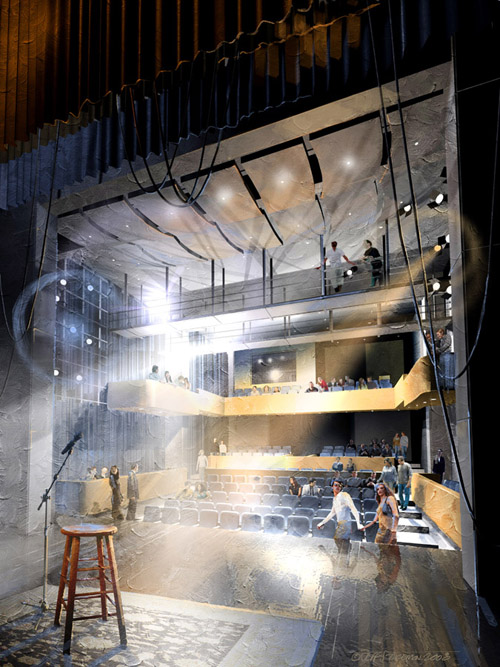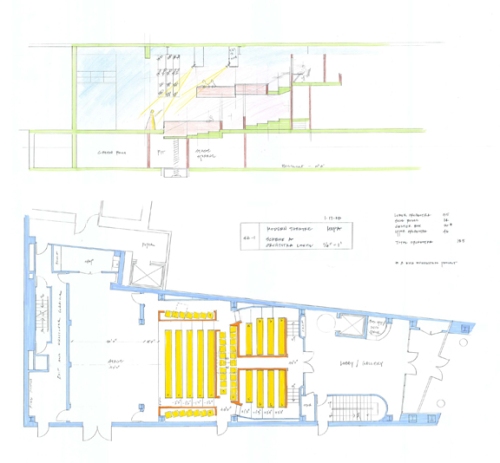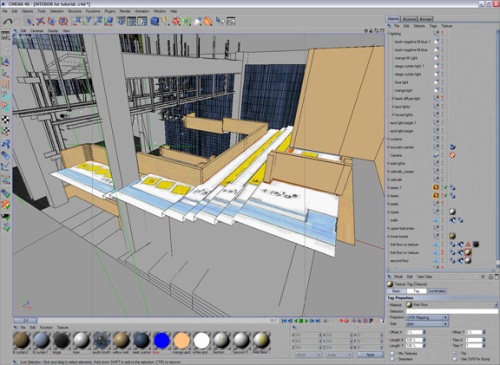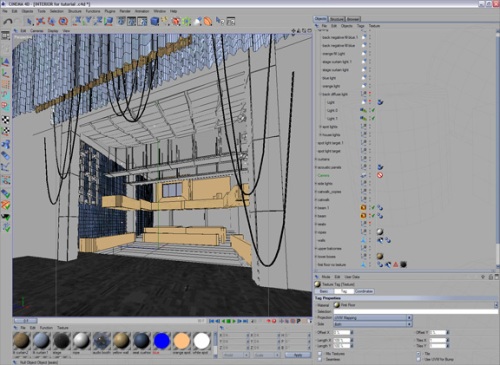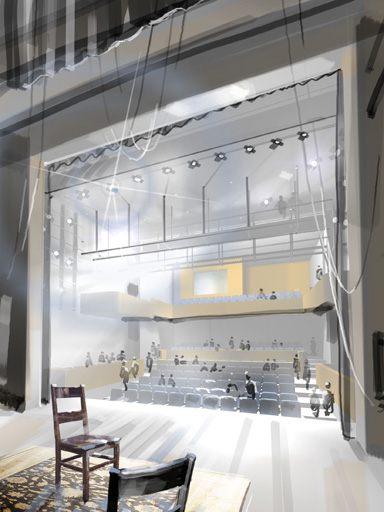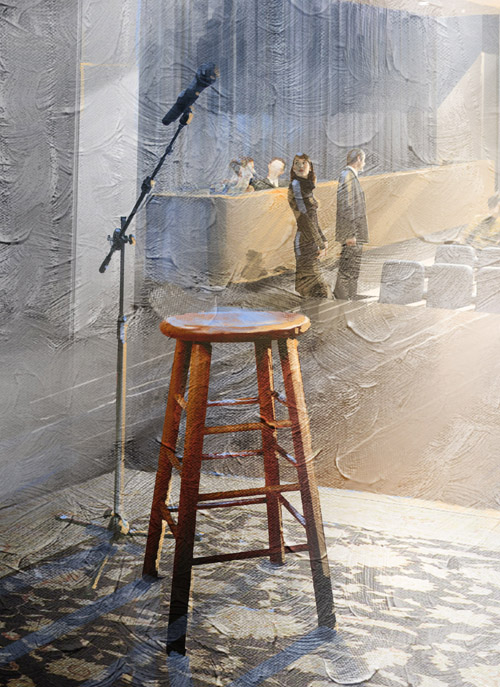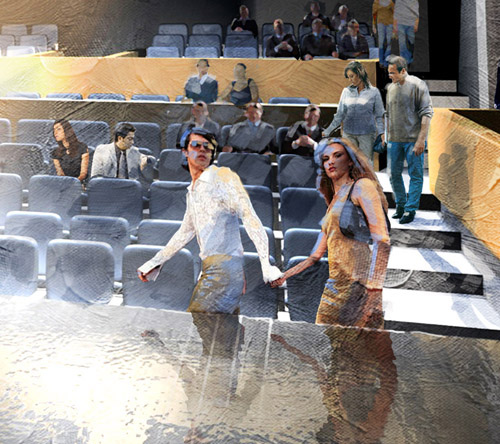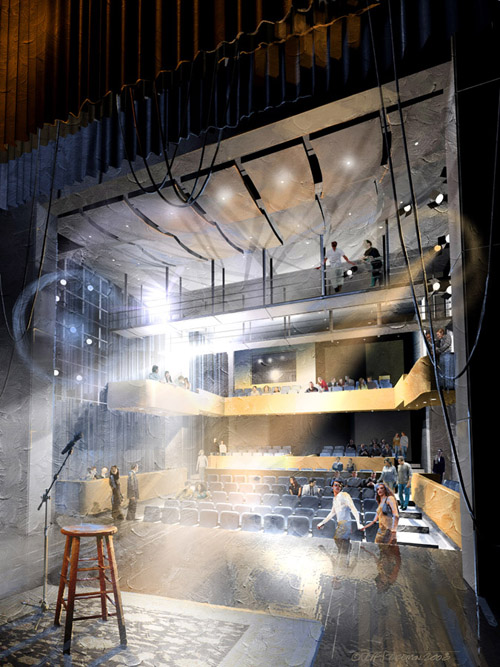Got a call from the architect a couple months ago, Adrian LeBuffe of CBT Architects in Boston, that as a follow-up to the previous three images done for this project, they’d like to go ahead and have a rendering done of the Lobby. This one was going to be a little more dialed back than the others, less theatrical and dark, but it still needed to integrate with the suite of images. The idea was to go much lighter here, yet incorporate the looseness and stylized nature of the others.
The space has a great winding staircase which travels up and around the volume, crossing in front of the large original entry, which is a large glazed opening that looks out onto Washington Street (behind the viewer in this image).
The walls were intended to hold a number of pieces of art work, potentially a rotating exhibition of student work. There wasn’t much else to animate the space, and as is often typical, there was a desire to get back and see as much of the volume as is possible. Often, this is a nightmare, with extra wide angles distorting everything, and a difficult time wrangling the eye toward a center of interest.
The fact that the stair wound itself all around the space was a godsend in this regard, because it allowed the edges of the image to develop a sort of circular composition, the eye crawling up the stairs from the bottom landing, across toward the viewer’s station point, and upward at left to the balcony beyond, returning to the right and down. In order to anchor the composition, I placed a colorful piece of artwork and the figure of a woman together on the low landing, and balanced those with the largest piece of art on the adjacent left wall. The thinking was that these three elements would work together to form a center of gravity at one of the third points. They act not so much as an obvious center of interest in the classical sense, but more of an achor, around which the eye can move.

The Large Piece of Artwork (a detail from the Building's Exterior) Works with the Colored Artwork (a detail from the Paramount) and the Figure of the Woman to form the Center of Gravity for the entire Composition.
The neutral color palette was a head-scratcher, too, frankly. Not for design’s sake, of course. A neutral palette for the walls supports the artwork, and is entirely reasonable. I was thinking purely with regard to the level of energy of the prior three images, where the lighting and color were more vibrant simply because we were dealing with exterior night scenes, and an energetic theater interior.
The fixtures lighting the artwork might have provided an excuse to get playful with lighting, but artwork is generally lit evenly and unobtrusively, not theatrically. So, aside from some nice shadows from the frames, and highlights (I decided to make the frames nickel-silver in color), I wasn’t going to be able to get too exuberant with the lighting. I didn’t want to light the space in a way that was counter to communicating the design intent, which is the primary consideration of the image after all.
All the other scenes for this series are taken at night, and despite the fact that our viewer’s back is to the large entry window, I still felt it could be an evening scene. This allowed me to introduce other colors not a part of the finish scheme per se by simply treating the scene outside as a wonderfully, colorfully lit source of colored light and colored specular reflections. It is a street of great theaters, and nightlife is returning, so the hues here come from lights outside the building, at the sidewalk and from retail buildings adjacent and across the street. These colors creep into the darker corners of the space as colored fill light (turning boring grey shadows into shadows of color), but they are most noticeable at the metal rail, which reflects the lights and ambient color from the exterior.
A door opening beyond, tucked under the uppermost landing, is the entrance to the new theater space itself. In a vitrine on its far wall is a section from the original theater’s frieze. The rest of the existing 19th century house was beyond salvage, but a portion of its cherubic frieze, about four feet tall and nine feet long, will provide some color and visual interest to the theater vestibule.

Detail showing the Entrance to the Theater at Ground Level, with some artwork on the volume at right, which houses the building's elevator.
In order to break up the long unrelenting (compositionally, anyway) handrail, I introduced the figure of a woman at the rail, hit from above by a downlight. She not only breaks the rail, but somewhat obviously redirects us back into the image and reinforces the circular composition. The rail behind her continues up and to the right, and the eye renters the loop.
The rewarding thing to me about this series is that the Architect and his Client (Suffolk University) recognized that the very nature of the Theater as a project type, and the fact that the project would provide some much-needed (and long missing) activity and visual interest to this portion of Washington Street, meant that we could be a little more experimental. The exterior images set a tone and a stylistic approach, and the challenge then became to maintain that theme throughout the series, as the two interior pieces were introduced at later dates.






